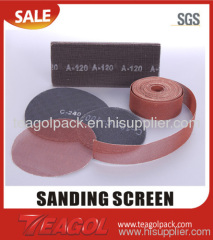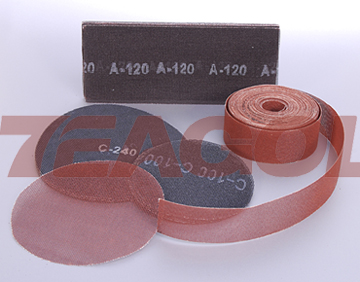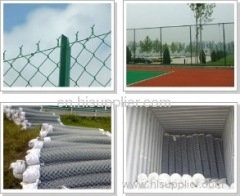.jpg)
|
Anping Yilida Metal Mesh Co., Ltd.
|
chain link wire meshes
| Price: | 10.0~15.0 USD |
| Payment Terms: | T/T,L/C |
| Place of Origin: | Hebei, China (Mainland) |
|
|
|
| Add to My Favorites | |
| HiSupplier Escrow |
Product Detail
usages: it is widely used as apeedway,protection,safe guard on machinery,building wall,poultry fence,playing-field,greening fence,waterways,etc.
Sizes and uses:
In the United States, fencing usually comes in 20 rod and 50 ft rolls which can be joined by "unscrewing" one of the end wires and then "screwing" it back in so that it hooks both pieces. Common heights include 3 ft, 3 ft 6 in, 4 ft, 5 ft, 6 ft, 7 ft, 8 ft, 10 ft, and 12 ft, though almost any height is possible. Common mesh gauges are 9, 11, and 11.5. For tennis courts and ball parks the most popular height is 10 ft.
In the United States, fencing usually comes in 20 rod and 50 ft rolls which can be joined by "unscrewing" one of the end wires and then "screwing" it back in so that it hooks both pieces. Common heights include 3 ft, 3 ft 6 in, 4 ft, 5 ft, 6 ft, 7 ft, 8 ft, 10 ft, and 12 ft, though almost any height is possible. Common mesh gauges are 9, 11, and 11.5. For tennis courts and ball parks the most popular height is 10 ft.
The popularity of chain-link fence is due to its relatively low cost and ease of installation. A further advantage is that due to the open weave, chain-link fences are transparent, and do not obscure sunlight from either side of the fence. If a semi-opaque fence is desired, this can be achieved by the insertion of slats into the mesh.
Installation:
The installation of chain-link fence involves setting posts into the ground and attaching the fence to them. The posts may comprise steel tubing, timber or concrete and may be driven into the ground or set in concrete. End posts, or terminal posts, must either be set in concrete or anchored to prevent leaning under the tension of a stretched fence. After the end posts are set, line posts are driven in equally spaced at intervals of 2.5-3.0m. The fence is then attached at one end, stretched, and attached at the other; the excess being easily removed by "unscrewing" a wire. Finally it is tied to the line posts with aluminum wire.
Installation:
The installation of chain-link fence involves setting posts into the ground and attaching the fence to them. The posts may comprise steel tubing, timber or concrete and may be driven into the ground or set in concrete. End posts, or terminal posts, must either be set in concrete or anchored to prevent leaning under the tension of a stretched fence. After the end posts are set, line posts are driven in equally spaced at intervals of 2.5-3.0m. The fence is then attached at one end, stretched, and attached at the other; the excess being easily removed by "unscrewing" a wire. Finally it is tied to the line posts with aluminum wire.
Didn't find what you're looking for?
Post Buying Lead or contact
HiSupplier Customer Service Center
for help!
Related Search
Chain Link Wire Mesh
Chain Link Wire
Anping Wire Meshes
Chain Link
Link Chain
Chain Link Fence
More>>

.jpg)
.jpg)
.jpg)



.jpg)
.jpg)
.jpg)
.jpg)
.jpg)
.jpg)
.jpg)
.jpg)
.jpg)
.jpg)
.jpg)
.jpg)
.jpg)
.jpg)
.jpg)
.jpg)
.gif)
.jpg)
.gif)

